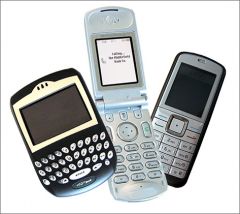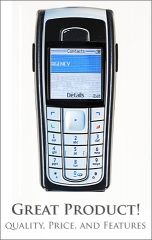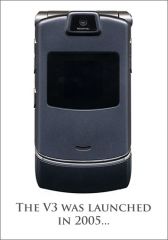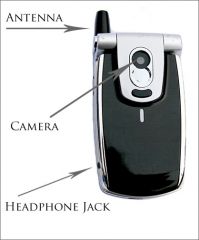![]()
![]()
![]()
Use LEFT and RIGHT arrow keys to navigate between flashcards;
Use UP and DOWN arrow keys to flip the card;
H to show hint;
A reads text to speech;
53 Cards in this Set
- Front
- Back
- 3rd side (hint)
|
_______ creates a work of art.
LANGUAGE is the key focus because the writer uses words to create vivid images and characters to entertain the reader. |
Literary Writing
|
Poetry, novels, plays, songs, movies, and even the comics
|
|
|
_____ “calls attention to the writer’s personal feelings, aspirations, and emotions” (Kinneavy).
The WRITER is the key focus because as the writer explores personal experiences, his or her identity is revealed. |
Expressive Writing
|
Journals, diaries, letters to the editor, gripe sessions, protests, personal essays, and travel logs
|
|
|
_____ attempts to get readers to change their point of view and possibly to take action.
Therefore, the READER is the key focus. |
Persuasive Writing
|
Political speeches, editorials, sermons, and advertising The writer wants readers to think a certain way about an issue such as the war in Iraq or women breastfeeding in public. Or the writer wants readers to take action: to buy a certain phone, to stop smoking, to wear a motorcycle helmet, and so on. |
|
|
_____, writing focuses on providing the reader with “an examination of the subject matter” (Polnac 78).
Therefore, the MESSAGE is the key focus. |
Referential Writing
|
Magazines, journals, encyclopedias, textbooks, newspapers, and interviews.
|
|
|
If the primary focus is on using language to entertain, the purpose is
|
literary
|
|
|
|
If the primary focus is on the writer’s personal experiences, the purpose is
|
expressive
|
|
|
|
If the primary focus is to convince the reader of something, the purpose is
|
persuasive
|
|
|
|
If the primary focus is to provide information, the purpose is
|
referential
|
|
|
|
LEPR =
|
Literary, Expressive, Persuasive, Referential
|
|
|
|
organizes information by taking items and grouping them in categories.
|
Classification
|
|
|

What kind of writing pattern would this picture represent?
|
Classification
|
|
|

What kind of writing pattern would this picture represent?
|
Evaluation
|
|
|

What kind of writing pattern does this phone represent?
|
Narration
|
|
|

What writing pattern does the image refer to?
|
Division
|
|
|
|
Dental Hygiene Career
-job description -salary -educational requirements -professional development requirements -negative factors Texas History -Spanish influence -Mexican influence -Confederate influence, and -U.S. influence in shaping the history of the state. |
Physical Description
of a person, place, or thing |
|
|
|
_____ is to separate the whole for the purpose of studying the parts. The goal is to understand how all the parts contribute to the whole.
|
Analysis
|
|
|
|
controls “how the message is created, what details are included and excluded, and how those details are organized” (Polnac 2).
|
Purpose
|
|
|
|
focuses on how the information is arranged and developed.
|
Pattern
|
|
|
|
sorts items into groups
|
Classification
|
-formal
-comparison and contrast -definition |
|
|
presents the subject, makes a judgment, and uses criteria to assess the subject
|
Evaluation
|
|
|
|
organizes by time
|
Narration
|
-recountal of an event
-explanation of a process -cause and effect |
|
|
breaks something down into its key parts
-physical description of a person, place, or thing -analysis |
Division
|
|
|
|
CEND=
|
Classification, Evaluation, Narration, Division
The Four Writing Patterns |
|
|
|
Literary writing has three key characteristics:
|
tension, artistic language, and literary devices.
|
|
|
|
There is a struggle between two opposing forces.
|
Tension
|
Usually, the main character struggles against
* another person * society * nature * self |
|
|
* Hyperbole
* Metaphor * Personification * Repetition * Simile * Symbolism |
Artistic Language
|
|
|
|
* Characterization
* Dialogue * Setting |
Literary Devices
|
|
|
|
TALe =
|
Tension, Artistic language, and Literary devices
|
|
|
|
The struggle between two opposing forces creates a opposition.
|
Tension/Conflict
|
Usually, the main character struggles against:
Another person The struggle is against another individual. Society The struggle is against a social convention or custom. Nature The struggle is against the forces of nature. Self A psychological struggle occurs inside the character. |
|
|
is used to help readers see things in new ways.
|
Artistic Language
|
|
|
|
are used to add life and authenticity.
|
Literary Devices
|
|
|
|
Creating and developing a character by stating a character’s traits directly or by describing a character’s traits through his or her actions, thoughts, feelings, words, and appearance or through another character’s observations and reactions.
|
Characterization
|
|
|
|
A conversation between characters or with oneself. IT is used to report interesting thoughts and remarks. Quotation marks are used to record dialogue.
|
Dialogue
|
|
|
|
The time and place of the action. It is used to create a particular atmosphere or mood.
|
Setting
|
|
|
|
a figure of speech that uses a deliberate exaggeration that is not meant to be taken literally.
|
Hyperbole
|
|
|
|
figure of speech in which one thing is spoken of as though it were literally something else.
|
Metaphor
|
|
|
|
a figure of speech in which a nonhuman subject is given human qualities
|
Personification
|
|
|
|
using a sound, a word, a phrase, a clause, a sentence, or grammatical pattern more than once to create an effect.
|
Repetition
|
|
|
|
a figure of speech that makes a direct comparison between two subjects using either “like” or “as.”
|
Simile
|
|
|
|
a concrete object that represents an abstract idea, quality, or concept.
|
Symbolism
|
|
|
|
Expressive writing has four characteristics:
|
values, emotion, self-definition, and subjective language.
|
|
|
|
Desirable qualities you want in yourself and others.
|
Values
|
jovial, kind, honest, family oriented, loyal, forgiving, generous, empathetic, thoughtful, humorous, hardworking, considerate, playful, trustworthy, and so on.
|
|
|
The expression of strong feelings.
|
Emotion
|
“I could feel myself being erased.”
–Sandra Cisneros, “Only Daughter” “Mercy . . . for God’s sake, please let me die.” –Barbara Huttmann, “A Crime of Compassion” |
|
|
A self-evaluation answering the question “Who am I?”
|
Self-definition
|
“I was going on thirteen.”
–Langston Hughes, “Salvation” “I am the only daughter in a Mexican family of six sons.” –Sandra Cisneros, “Only Daughter” |
|
|
A personal style of speech. The word choice is informal and conversational instead of academic or formal.
|
Subjective Language
|
Slang: excessively informal words and phrases usually particular to an age group:
“off the hinges,” “poser,” “pity party,” and “props” are examples. First-person: the pronouns I, me, my, mine, we, us, our, and ours are used extensively because a personal experience is being expressed. |
|
|
VESS =
|
Values, Emotion, Self-definition, and Subjective language
|
|
|
|
_____ makes a claim defending a position on an issue, proposing a solution, or evaluating a subject.
|
Thesis
|
Girls in sixth grade should be vaccinated for HPV, a sexually transmitted virus that causes cervical cancer.
We can end the war [on drugs] and at the same time keep junkies off the streets by making drugs freely available—in pharmacies located in minimum-security prisons. –Tom Dworetzky, “What to Do with Our Addiction Problem: Waging Peace on Drugs” Chuy’s restaurant has the best Tex-Mex food in Austin. |
|
|
The claim is supported by reasons, and the reasons are developed with proof that is sufficient, relevant, and credible. _____ includes observations, consequences, common knowledge, statistics, examples, and authorities.
|
Valid Evidence
|
Why does the writer believe this?
What proof will the writer use to support the stated reasons? |
|
|
The writer uses language that is appropriate to his or her reader.
First, second, or third person may be used. |
Reader-oriented language
|
“As a result, the writer may use everyday speech, slang, jargon, or Standard Edited American English, if that is what the reader expects and will accept” (Polnac 57).
|
|
|
EAR =
|
Evidence, A thesis, and Reader-oriented language
|
|
|
|
Referential writing has three characteristics:
|
Thesis, Valid evidence, Objective language
VOTe |
|
|
|
VOTe =
|
Valid evidence, Objective language, and Thesis
|
|
|
|
The TALe that VESS told burned my EARs, but it made me want to VOTe for her. =
|
LEPR
|
|

